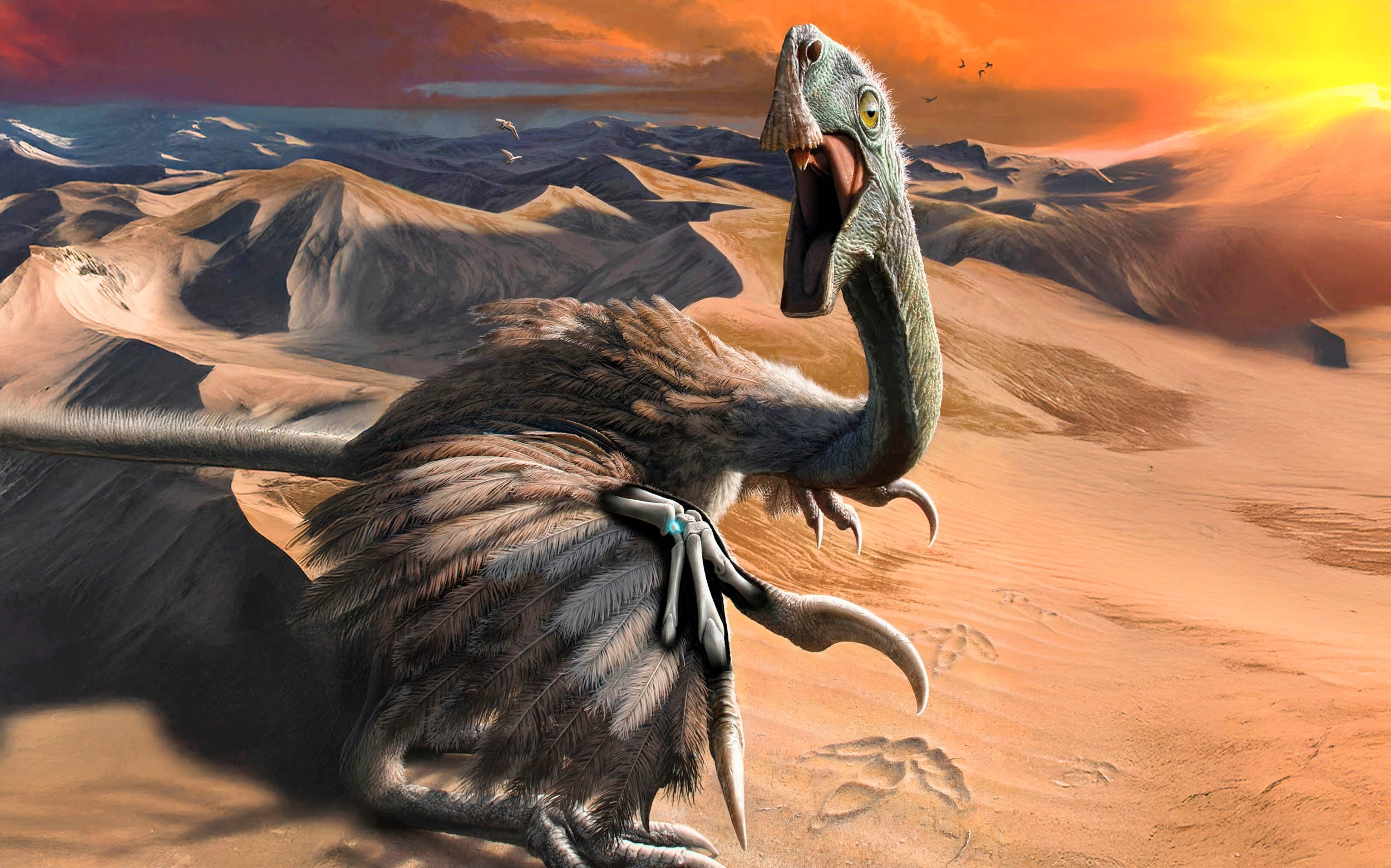New scans of two small predatory dinosaurs reveal a pea-sized wrist bone once thought unique to birds. The research suggests that the engines of flight were revving inside dinosaur arms long before any creature flapped skyward.
The study was led by James Napoli of Stony Brook University with colleagues at the American Museum of Natural History and the Mongolian Academy of Sciences.
The research overturns earlier claims that theropods lacked a bird-like pisiform and raises the possibility that the path to powered flight was, as the authors put it, “all in the wrist.”
Dinosaur wrist bone on the move
Modern birds fold their wings automatically when the elbow bends. The hinge works because a tiny carpal called the pisiform migrated from the edge of the wrist to replace another bone, the ulnare.
Its new spot lets a V-shaped notch clamp the hand bones and stop them from popping loose during vigorous flapping.
For years, paleontologists assumed non-avian dinosaurs never made that switch. Napoli’s team tested the dogma by CT-scanning an exquisitely preserved troodontid, a quick, velociraptor-like hunter. They also scanned an oviraptorid, a beaked omnivore with a long neck.
Digital slices peeled away surrounding rock, isolating each pebble-sized carpal in three dimensions. The images showed a bead-like bone tucked where the pisiform sits in modern birds.
“We believe this is the first time a migrated pisiform in a non-bird meat-eating dinosaur has been identified,” Napoli said.
The discovery pushes the joint’s redesign back to Pennaraptora, a diverse branch of feathered theropods that includes velociraptors, troodontids, and oviraptorosaurs.
Flight link to wrist evolution
“While we currently do not know precisely how many times dinosaurs learned to fly, it is intriguing that experimentation with flight in these creatures appears only after the pisiform migrated into the wrist joint,” Napoli explained.
“Therefore, it is possible this established the automated mechanisms found in current living birds, though we would need to test this hypothesis with more research and analysis of dinosaur wrist bones.”
The scientists argue that the pisiform’s relocation was gradual. Early pennaraptorans still carried a small ulnare. Later species lost that bone entirely as the pisiform enlarged and took over its role.
Gradual wrist bone replacement
The replacement mirrors other avian traits – hollow bones, enlarged brains, filamentous feathers – that spread outward through theropod evolution before coalescing into true birds.
According to the authors of the study, the findings make clear that the topological and functional replacement of the ulnare by the pisiform occurred much deeper in theropod history than has been previously understood and was a stepwise process.
“Over the past few decades, our knowledge of theropod dinosaur anatomy and evolution has increased exponentially, much of it revealing that classically ‘avian’ traits such as thin-walled bones, an enlarged brain, and feathers, all characterize more inclusive groups of theropod dinosaurs,” noted the researchers.
“Our results suggest that the construction of the avian wrist is no exception and follows topological patterns laid down by the origin of Pennaraptora.”
Scans reveals hidden features
Identifying the bone took both luck and technology. The fossils – discovered in Mongolia’s Cretaceous rocks – had escaped crushing, so their wrist bones lay undisturbed.
Micro-CT resolution below 50 microns allowed the researchers to trace delicate sutures, distinguishing the pisiform’s spoon-like head and its telltale notch.
Without such scans, the structure would look like one of several nubs commonly lumped together as generic carpals.
Wrist bone shaped evolution
Flight appears to have evolved at least twice within Pennaraptora and perhaps as many as five times. If the pisiform swap predates those experiments, it may have primed the limb for aerial feats in separate lineages.
That echoes convergent “upgrades” seen in pterosaurs, bats, and birds, where wrist and shoulder tweaks unleash new kinematic possibilities.
The finding also casts fresh light on grounded relatives like Velociraptor. Though too heavy to fly, such animals wielded feathered arms for display, brooding, or balance.
A bird-style pisiform would have let them tuck and unfurl their limbs with mechanical efficiency. This hints that the crouched, wing-guarding pose seen in some fossil nests used the same automatic folding action modern roosters employ.
Future fossil finds
Future work will scan additional fossils to see exactly when the pisiform first slid into place. The researchers want to investigate whether the move coincided with feather lengthening or muscle shifts.
They also hope to model forces across the joint to test how much stability the new bone adds during flapping or mantling motions.
For now, the lesson is clear: tiny parts can steer colossal evolutionary leaps. A marble-sized bone drifting a few millimeters may have set the stage for the skies to fill with beating wings. It began inside dinosaur wrists millions of years before the first true birds appeared.
Image credit: Henry Sharpe
The study is published in the journal Nature.
—–
Like what you read? Subscribe to our newsletter for engaging articles, exclusive content, and the latest updates.
Check us out on EarthSnap, a free app brought to you by Eric Ralls and Earth.com.
—–
